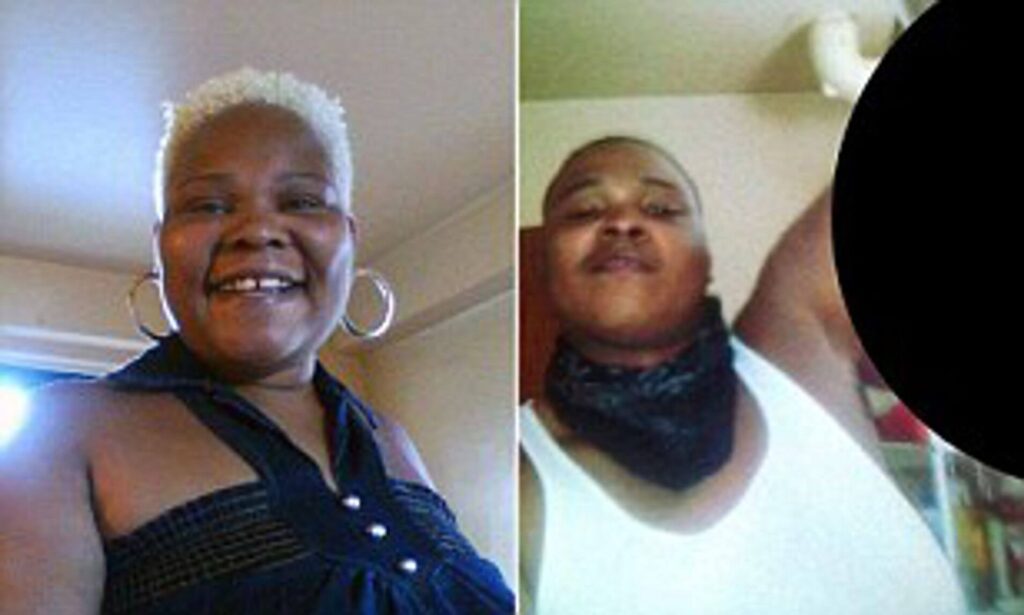In the annals of crime, there are stories that shock, stories that defy comprehension, and then there are those that delve into the darkest recesses of the human psyche. The tale of Bahsid McLean falls squarely into the latter category—a narrative that not only unravels the horrors of a single act but also serves as a chilling reminder of the complexities surrounding mental health and societal neglect.
Bahsid McLean’s name became infamous in 2013 when he committed a crime so heinous that it sent shockwaves through the city of New York and reverberated across the nation. The details are as gruesome as they are disturbing: McLean, then a troubled 23-year-old, murdered his own mother, Tanya Byrd, in their Bronx apartment. But what drove a young man to commit such a heinous act against the very person who gave him life?
The answer lies in the intertwining threads of Bahsid McLean’s troubled life—a life marked by hardship, trauma, and a profound lack of support. Born into a turbulent environment plagued by poverty and dysfunction, McLean’s formative years were marred by instability. His mother, Tanya Byrd, struggled to make ends meet, leaving Bahsid and his siblings vulnerable to the harsh realities of their surroundings.
As McLean navigated adolescence, his struggles with mental health became increasingly apparent. Reports suggest that he grappled with psychiatric issues, including schizophrenia—a condition that, left untreated, can distort one’s perception of reality and impair judgment. Yet, despite the red flags and cries for help, McLean found himself adrift in a system ill-equipped to address his needs.
The tragedy of Bahsid McLean’s story extends beyond the confines of his own psyche—it speaks to a broader failure of societal structures to support those grappling with mental illness. In the absence of adequate mental health resources, individuals like McLean are left to languish, their cries for help falling on deaf ears until tragedy strikes.
But perhaps what is most chilling about McLean’s case is the manner in which it unfolded—a stark reminder of the thin line that separates sanity from madness. The brutality of his actions, the desecration of his own mother’s body, serves as a haunting testament to the depths of despair to which untreated mental illness can lead.
In the aftermath of his arrest, Bahsid McLean was thrust into the spotlight, his face splashed across headlines as the embodiment of evil incarnate. But behind the sensationalism lies a more nuanced narrative—one of a young man failed by a system that should have protected him, a victim of circumstances beyond his control.
As we grapple with the aftermath of Bahsid McLean’s heinous crime, we are forced to confront uncomfortable truths about mental illness, poverty, and the profound inadequacies of our social safety net. His story serves as a sobering reminder of the work that remains to be done in addressing the root causes of crime and providing support to those most in need.
In the end, Bahsid McLean’s tale is not just one of horror and tragedy—it is a call to action, a plea for a more compassionate and just society in which no one falls through the fault lines of neglect and indifference. Only by confronting the demons that haunt our society can we hope to prevent future tragedies like that which befell Bahsid McLean and his mother, Tanya Byrd.
Frequently Asked Questions about Bahsid McLean
1. Who was Bahsid McLean?
Bahsid McLean was a young man who gained notoriety for committing a heinous crime in 2013. He murdered his own mother, Tanya Byrd, in their Bronx apartment in a shocking and gruesome manner.
Also Read: WellHealthOrganic 5: Revolutionizing Health and Wellness with Organic Solutions
2. What led Bahsid McLean to commit such a horrific act?
The factors leading to Bahsid McLean’s crime are complex and multifaceted. He grew up in a troubled environment marked by poverty and instability, and he struggled with mental health issues, including schizophrenia. The lack of adequate support and resources exacerbated his challenges, ultimately culminating in the tragic event.
3. What was Bahsid McLean’s mental health condition?
Reports suggest that Bahsid McLean grappled with schizophrenia, a severe mental disorder characterized by distorted thinking, hallucinations, and delusions. However, it’s important to note that specific details about his diagnosis and treatment may vary.
4. What happened to Bahsid McLean after the crime?
Following his arrest, Bahsid McLean faced legal proceedings and was ultimately convicted of the murder of his mother, Tanya Byrd. He was sentenced to prison, where he likely received mental health evaluations and treatment.
5. How did the public react to Bahsid McLean’s crime?
The public reaction to Bahsid McLean’s crime was one of shock and horror. The gruesome nature of the murder, combined with the familial relationship between the victim and perpetrator, sent shockwaves through the community and garnered significant media attention.
6. What does Bahsid McLean’s case reveal about mental health and societal support systems?
Bahsid McLean’s case highlights the challenges faced by individuals grappling with mental illness, particularly in underserved communities. It underscores the importance of adequate mental health resources, early intervention, and support systems to prevent tragedies like this from occurring in the future.
7. How can we learn from Bahsid McLean’s story?
Bahsid McLean’s story serves as a poignant reminder of the complexities surrounding mental health, poverty, and social support. It prompts us to examine and address systemic issues that contribute to individuals falling through the cracks of society, and it underscores the need for compassion, empathy, and comprehensive mental health care.

